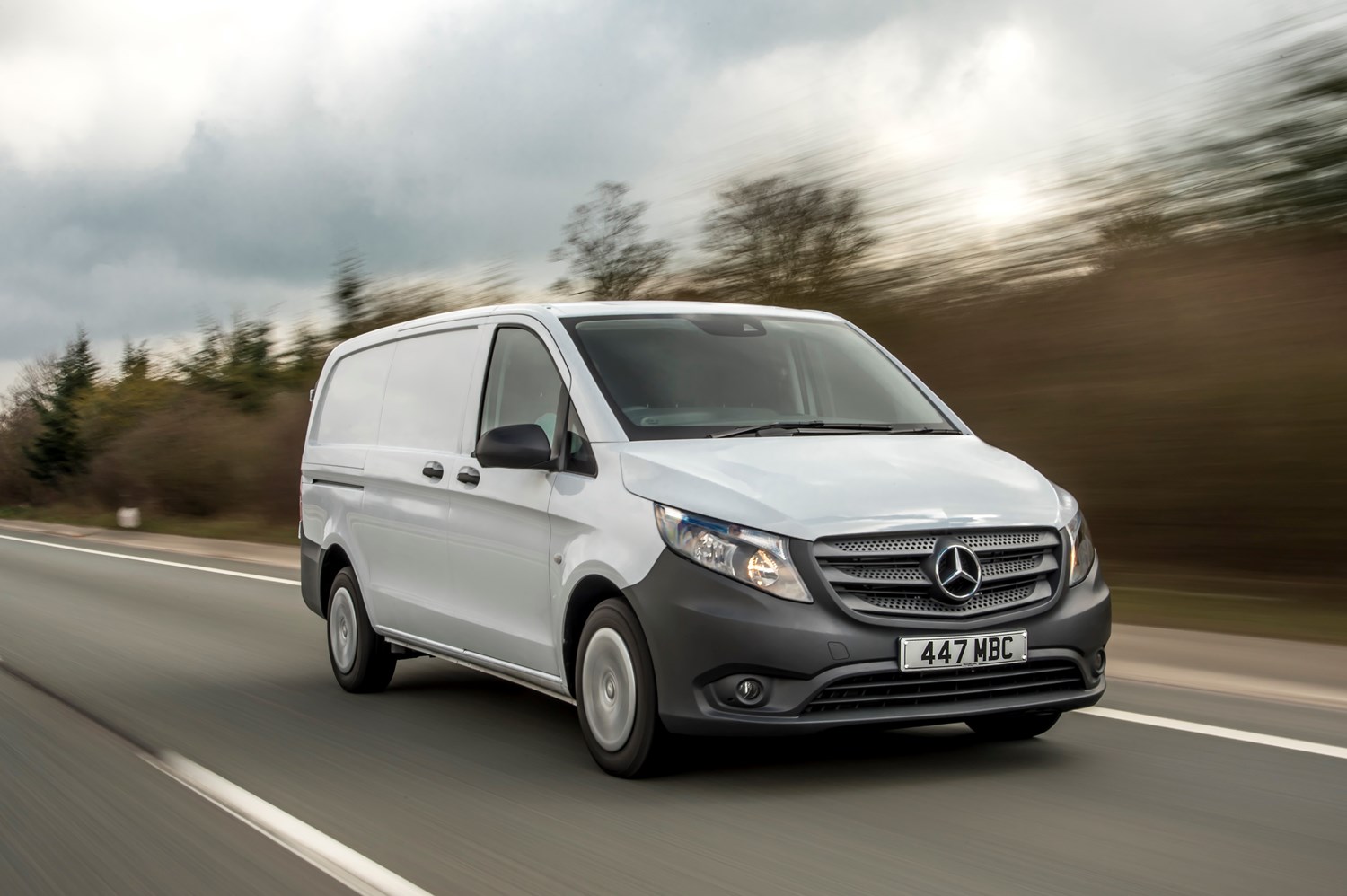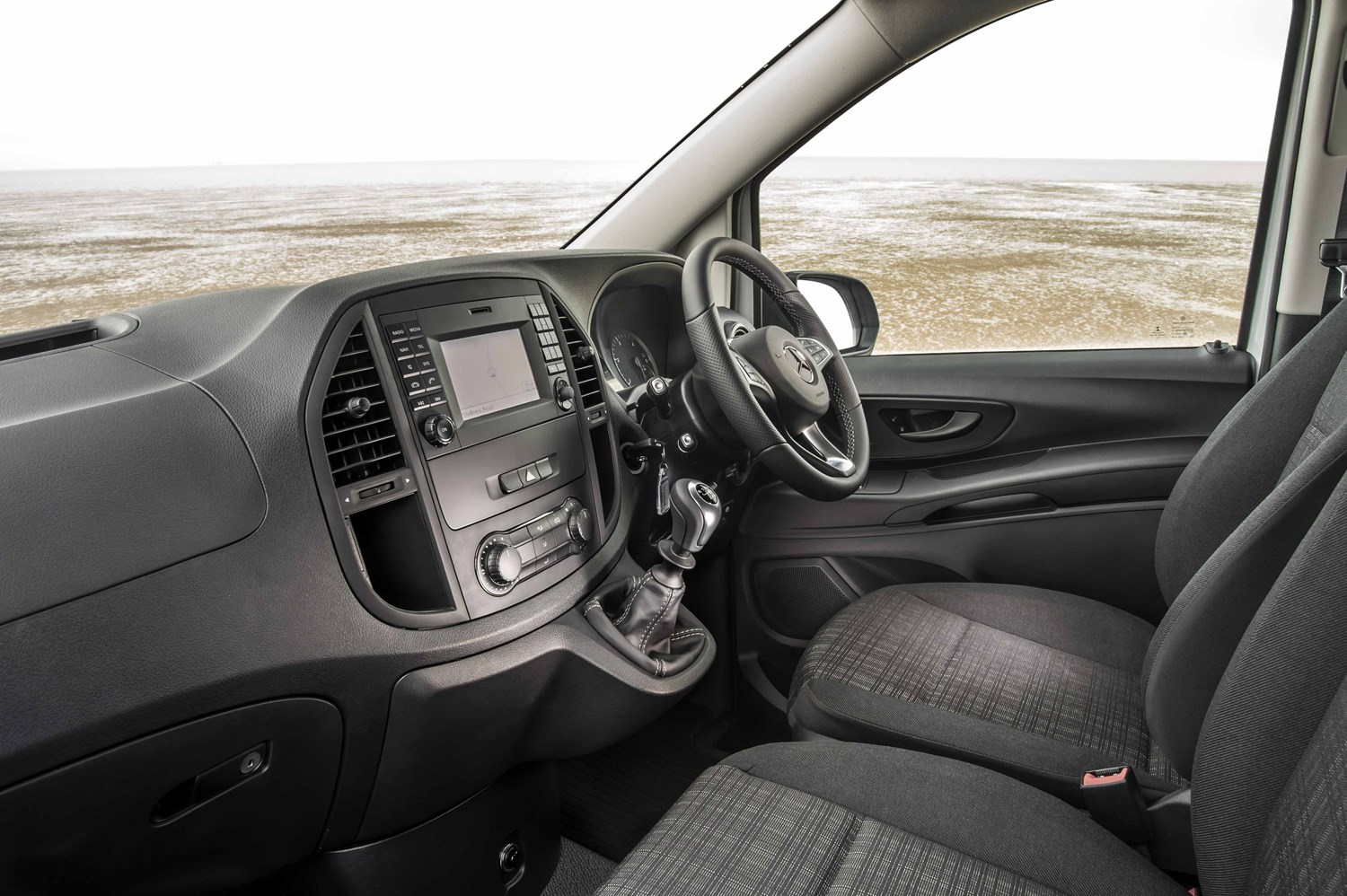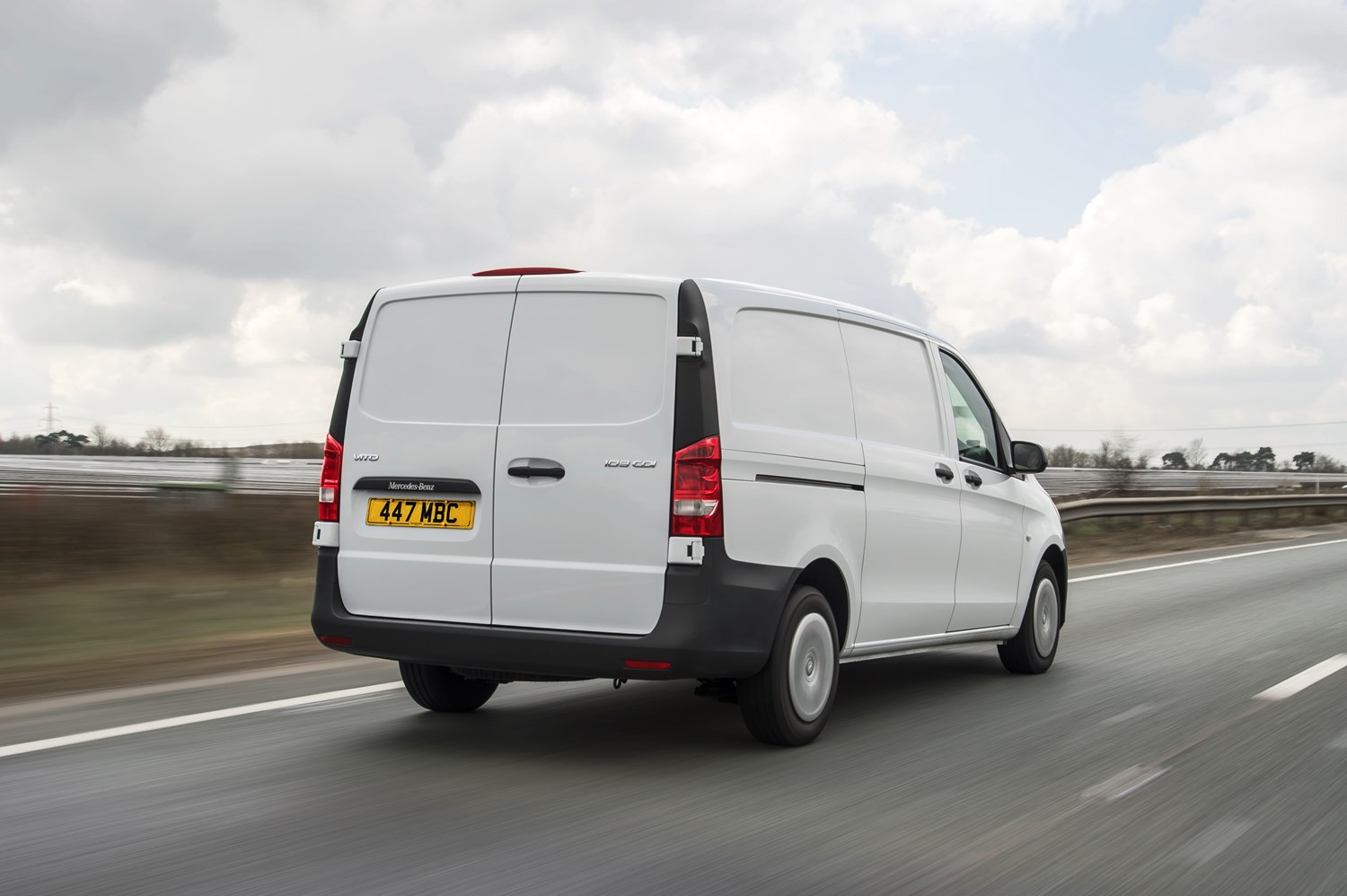Latest model
In 2020, the Vito range had a rejig, with the most prominent change being the introduction of a new electric eVito, which was aimed at the urban van market, though debuted with a rather minimal 92-mile electric range.
The rest of the lineup also had a rejig, with the model getting a whole set of new engines, as well as more in the way of technology – highlights including a digital rear-view mirror, autonomous emergency braking and adaptive cruise control. Styling changes are more reserved, though, with the only real changes being a new grille and additional choice of alloy wheel designs.
Value for money
As you might expect given the three-pointed star on the grille, the Vito isn’t the cheapest van in this segment, though with prices starting from £22,845 (excluding VAT), it’s actually decent value at this end of the spectrum, and surprisingly on par with rivals. Given all versions come with cruise control, a reversing camera and Apple CarPlay and Android Auto, the spec is impressive, too. However, as you go up the range, models are rather pricey, with top-spec Sport versions costing more than £40,000, even before VAT or optional extras have been considered.
The electric eVito model is also rather steeply priced, with this starting from £40,895.
When it comes to used Vitos, though, prices now start from as little as £3,000 for scruffy high-mileage options, though you’ll need to spend £6,000 or so to get something with fewer than 100,000 miles.
While you can expect to save a good few thousand by going down the nearly-new route, discounts won’t be as steep as with other manufacturers.
Looks and image
That Mercedes badge on the bonnet goes a long way to adding to the Vito’s appeal, as even in the lesser specs that come with steel wheels, it offers a more upmarket look than other models in this class. The higher spec Premium and Sport models bring classier styling, with additional chrome trim and alloy wheels, and look particularly appealing for a van, though do come at a rather steep price.
The Vito also offers a more expensive feel inside, too, with a good fit and finish that feels closer in-line with a car than a van. It’s not the most exciting layout, and perhaps doesn’t look as modern as some rivals, but there will be few grumbles from those behind the wheel.
The Vito is also largely a very pleasant thing to drive, with more of a focus on comfort and refinement than fun – something that will be appreciated if you spend a lot behind the wheel. The nine-speed automatic box also impresses, and is one of the best available in any van today.





